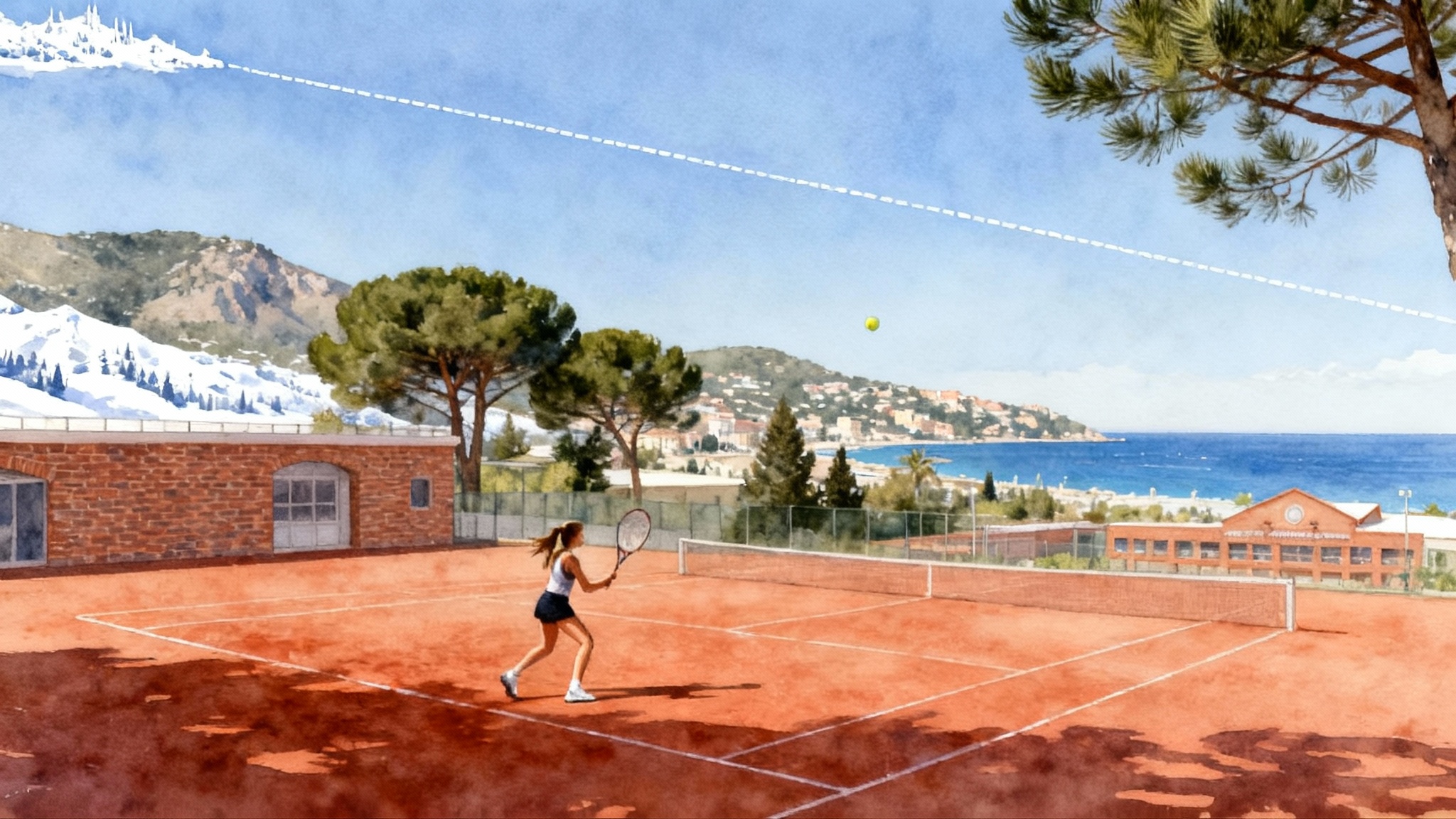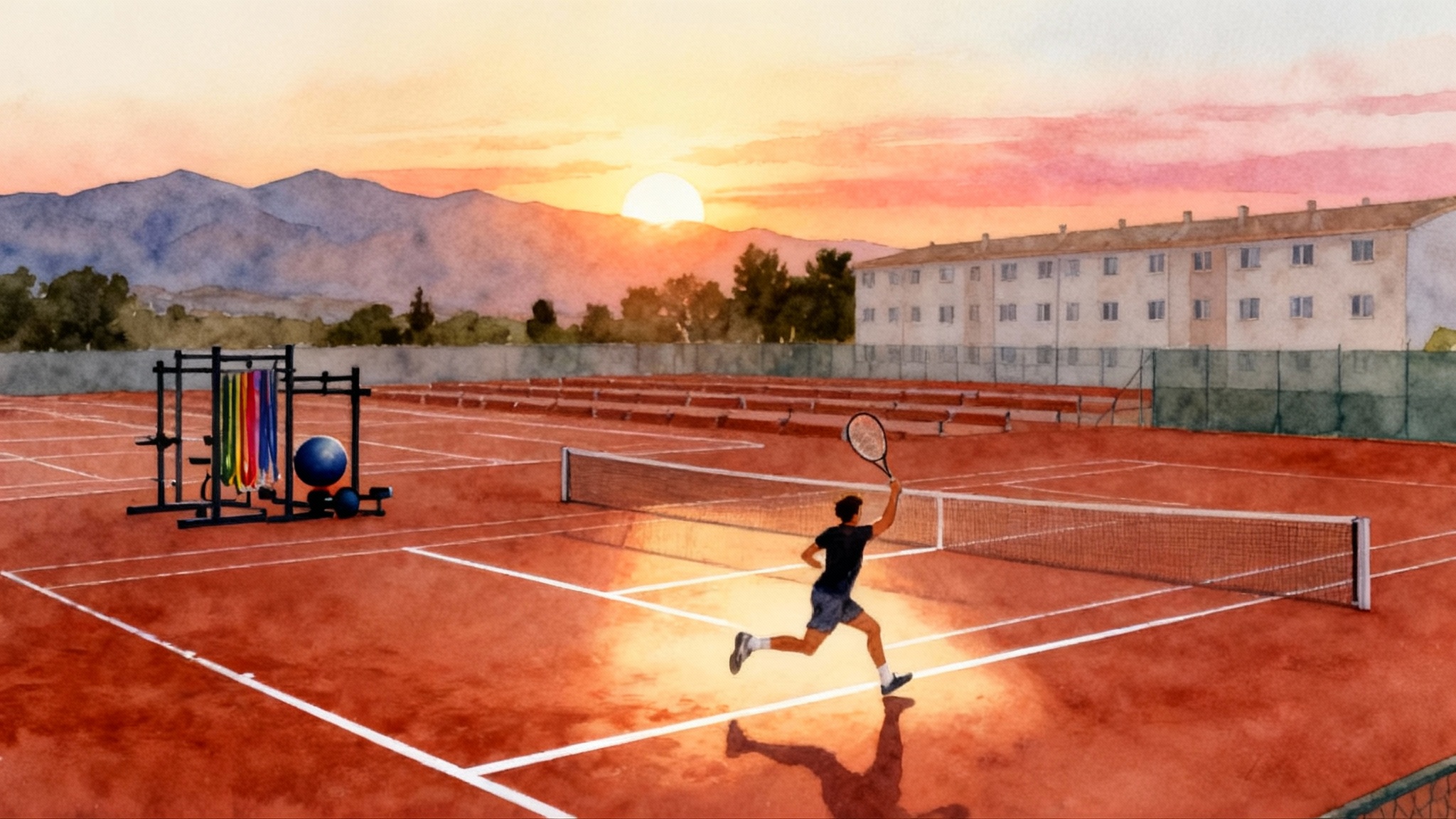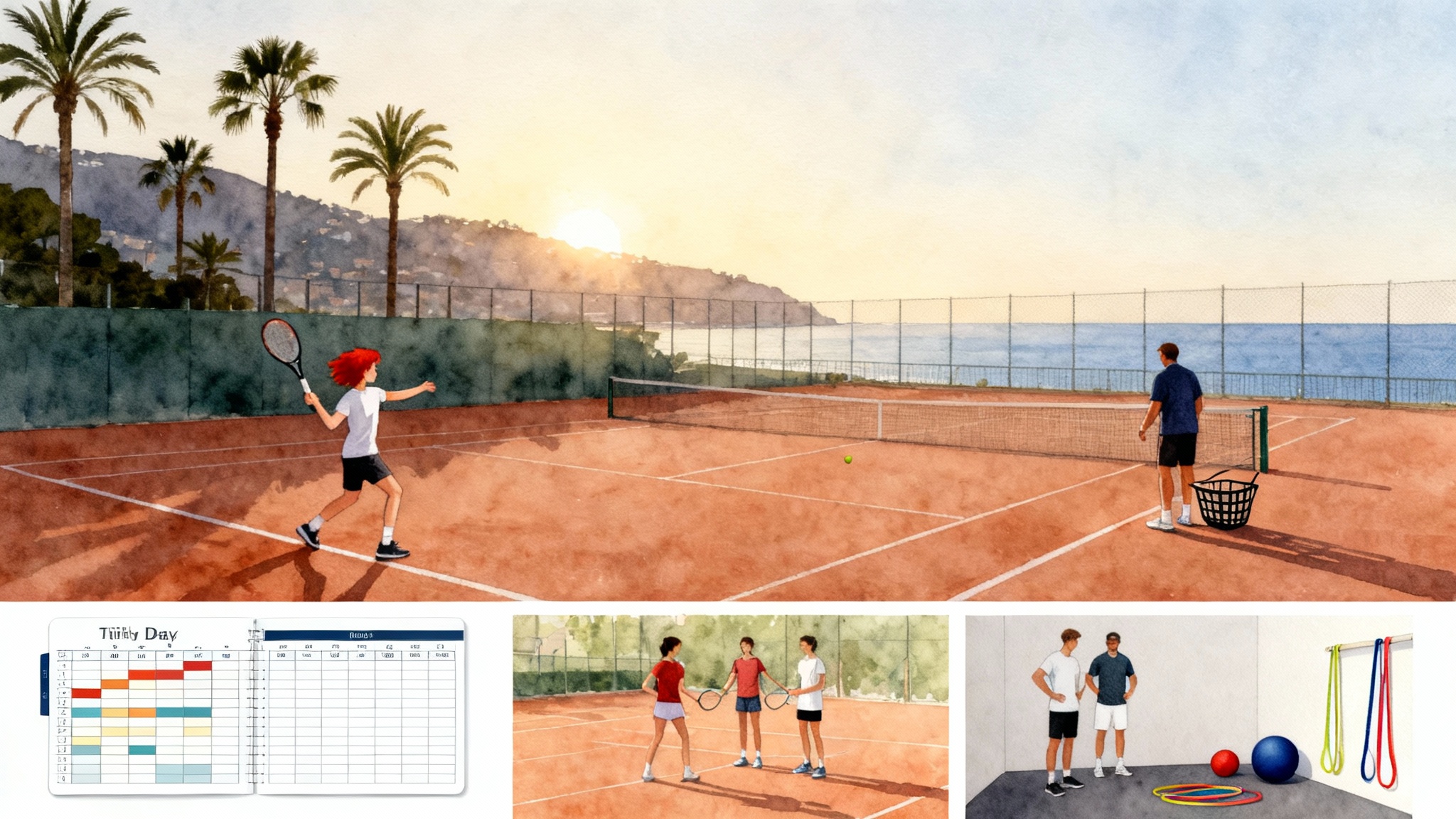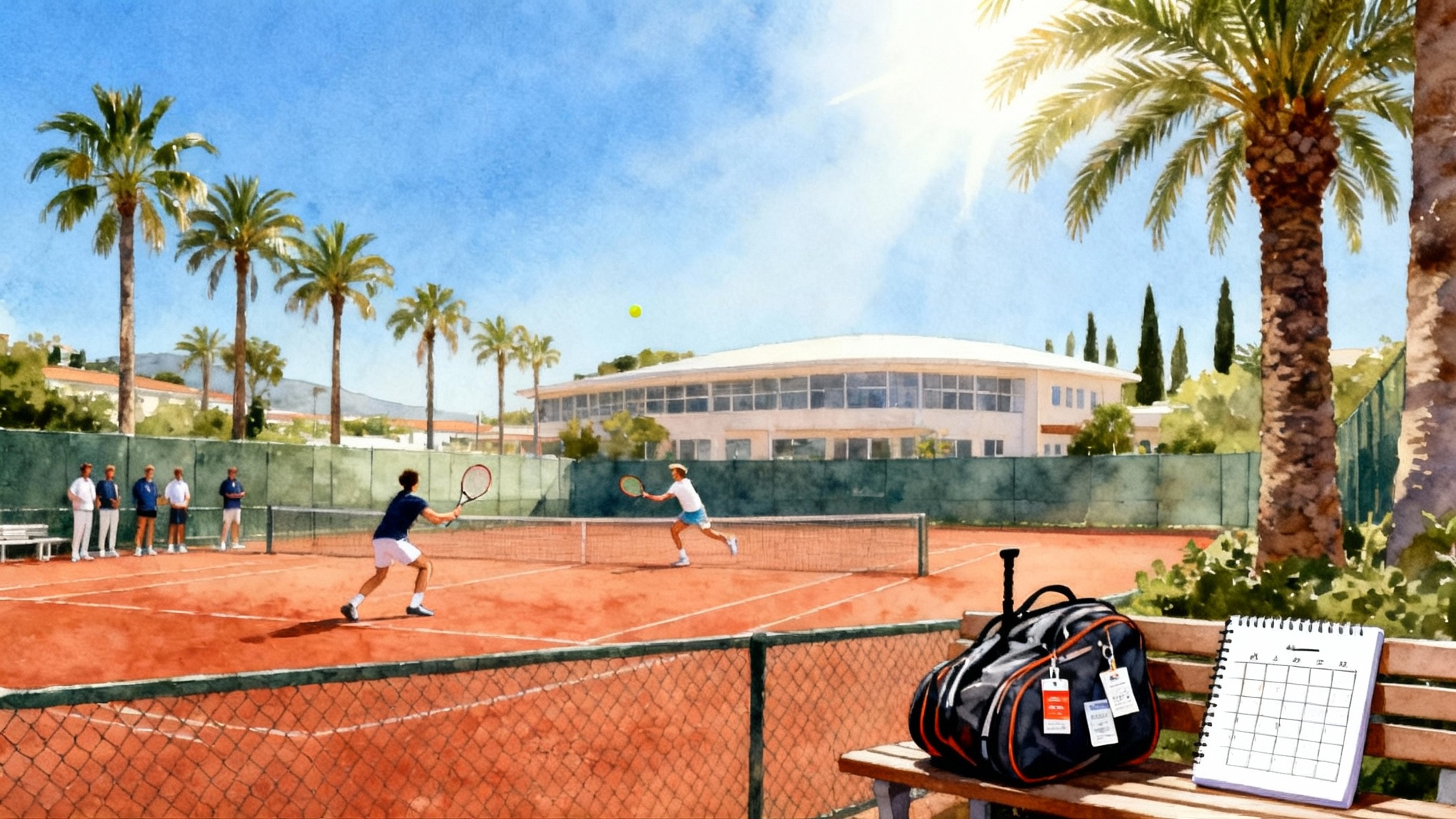From Belgrade to Munich: Djokovic’s Niki Pilic Academy Years
How Novak Djokovic went from Jelena Gencic’s methodical lessons in Belgrade to boarding at Niki Pilic’s academy near Munich, where match heavy training, German club play, and strict routines primed him for the ATP Tour.
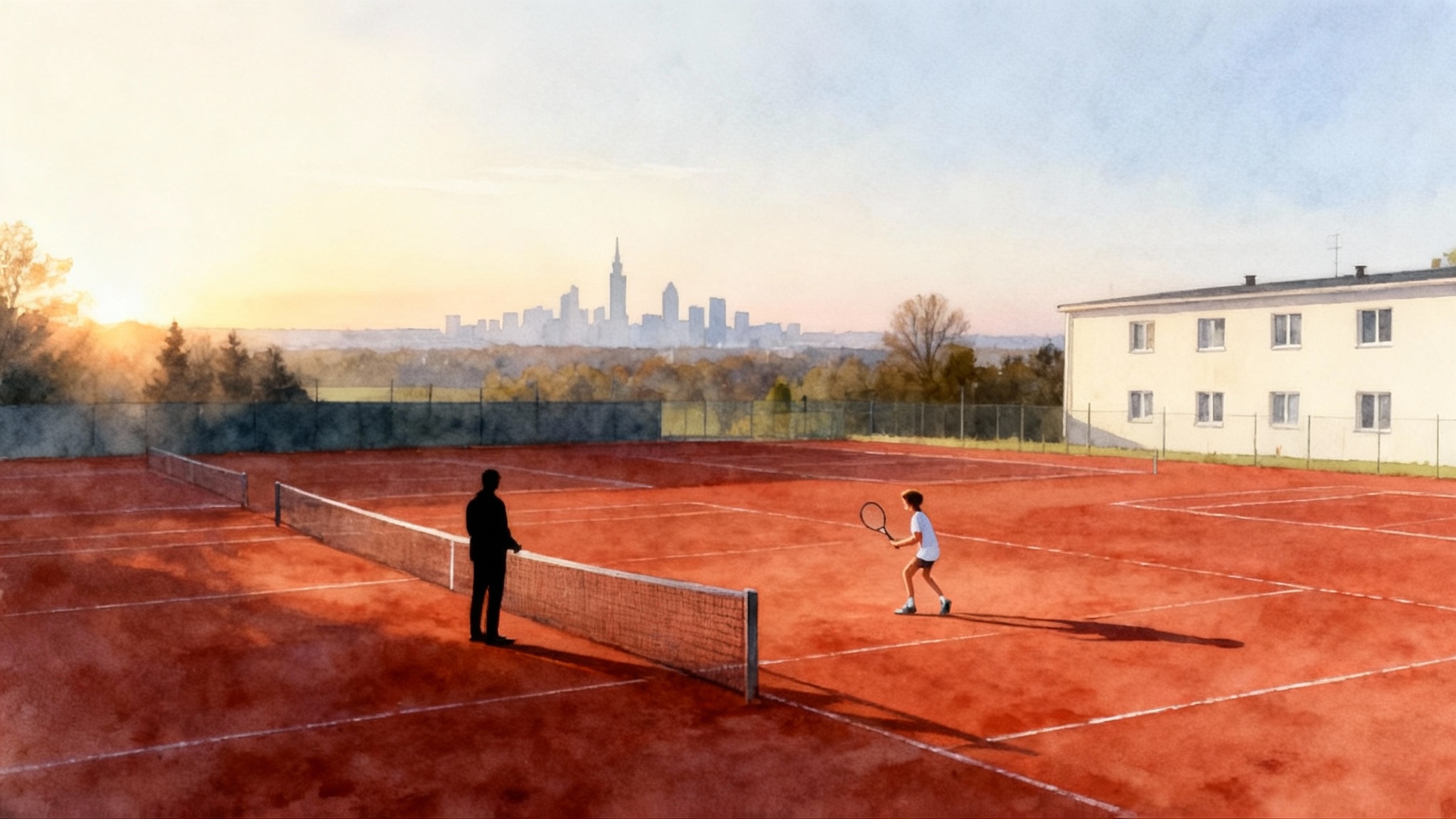
Belgrade beginnings, built to travel
Before the trophies and television cameras, Novak Djokovic was a small boy in Belgrade learning to hold a racket, a book, and his breath at the same time. His first coach, Jelena Gencic, treated tennis like a broad education. Footwork sat beside language exercises. Visualization sat beside classical music. Technique never floated without a story to anchor it. The point was simple. The mind and the body must travel together.
By his early teens, that travel stopped being a metaphor. Serbia in the late 1990s offered limited international competition; the family had to decide whether to keep perfecting strokes at home or to go where the matches were. That is when Novak and his parents chose boarding life near Munich, in Oberschleißheim, at the Niki Pilic Tennis Academy in Oberschleißheim. According to Novak’s own chronology, he left for Munich at 13, then spent several years moving back and forth between Serbia and Germany as results and resources allowed.
Why Pilic, and why Oberschleißheim
Coach-led. Compact. Match-hungry. Those three words define the appeal of Pilic’s program then and now. Niki Pilic was not just a name on a sign; he was present. Families did not buy a brand so much as they joined a coach’s ecosystem. That ecosystem rewarded two things: repetition under pressure and exposure to real competition.
Oberschleißheim sits just north of Munich. The location mattered. In a two-hour radius, a junior could find a dense ladder of German club matches, regional men’s leagues, and Futures-level events to watch and learn from. You did not need to fly to get better. You needed a calendar and a rail pass.
Boarding life in practice, not myth
People romanticize boarding academies. The less romantic truth is what accelerates growth. Days snapped into focus: wake early, train when courts are quiet, break for schoolwork, return for points and sets, then fitness and recovery. At a coach-led academy like Pilic’s, the template was consistent but not rigid. If Novak needed more backhand returns one week and more live points the next, the day shifted toward that. The accountability was personal because the academy was personal.
A typical week for a teenager in Novak’s position looked like this in practice:
- Two to three technical sessions on a single pattern, for example serve plus first ball or backhand cross to down the line.
- Several blocks of live points, often with older sparring partners, to force decision making under speed.
- One or two club matches on weekends when the league schedule allowed, plus practice sets during the week.
- Strength and conditioning that prioritized movement quality, not just volume, and recovery habits like sleep discipline and simple nutrition.
The cumulative effect was not glamorous. It was measurable. Timing improved because timing was tested every day.
The match-heavy model that fit the moment
What made Pilic’s environment so powerful for Novak at 13 to 16 was the bias toward matches. The drills and basket work mattered, but the currency of the week was live points. That is how German club culture works. You practice to play. You play to learn what to practice.
Germany’s club system gives juniors and young pros a steady diet of real competition without long flights. Teams compete by level across regions; teenagers can earn adult-level wins in front of teammates and local members. The setting is friendly, the pressure is real, and repetitions add up. For a family funding development on a tight budget, this system stretches money because match play is baked into the local calendar.
For Novak, those weekends and the practice sets around them compressed learning. Every Monday brought new video to review, new problems to solve, and a clear reason to show up early on Tuesday. When a player combines Gencic’s mental toolkit with a weekly ladder of matches, growth does not happen in a straight line. It happens in steps. The steps just come closer together.
From academy courts to the ATP Tour
Novak turned professional in 2003. That choice did not appear out of thin air. It was enabled by the rhythm Pilic’s camp created. The academy supplied high-quality hits on demand. The club system supplied real pressure. The back and forth between Serbia and Munich taught him to treat travel like part of the job, not a disruption.
The other ingredient was order. Disciplined routines create predictable energy. Novak’s habits in these years deserve attention from any family planning a move abroad:
- He kept a written plan, not just a sense of what to do.
- He searched for tougher practice partners, even if it meant playing up an age group or two.
- He stacked matches, but protected recovery with simple rules about sleep and food.
These are small mechanics. They become large advantages when repeated for months.
Pilic versus the destination academies
How does a coach-led academy like Pilic’s compare to the large, brand-led campuses families hear about today?
- Size and access: At a compact academy, a named coach often watches your player. At a brand campus, you are more likely to work with a staff coach day to day, which can be excellent but less personal.
- Competition model: Pilic’s location leaned on league play and short travel. Some big campuses rely on internal match sessions plus planned trips to tournaments. You can succeed both ways. The key is how many real, recorded matches you get each month.
- Training priority: Coach-led programs often favor live points sooner and keep technical changes small but frequent. Larger campuses can run longer technical phases with video stations, then scrimmage in blocks.
- Culture: Compact programs usually have fewer distractions and clearer pecking orders. Large campuses offer bigger peer groups, which can be motivating or overwhelming depending on the athlete.
Two reference points help orient families. The ATP’s player bio notes Novak attended Niki Pilic Academy at 12 before returning to Belgrade. Many readers also look for comparisons with modern pathways. For a contrasting route grounded in Italy, see Sinner’s Piatti path to World No. 1. For a Spanish model built around a strong club and academy partnership, explore Alcaraz’s JC Ferrero Academy path.
Practical playbook for families: timing, selection, school, costs, and calendars
This section distills what Novak’s path suggests, then translates it into decisions you can make.
1) When to move abroad
- Decision trigger: Move when local competition no longer stresses your player weekly. A string of comfortable wins is less useful than grinding three-setters against strong peers.
- Age window: Many players benefit from a first two to three month stint abroad between 12 and 15. Treat it like a pilot, not a permanent relocation. If the pilot produces clear gains and your child thrives socially, extend.
- How to test: Before signing a year, buy weeks. Stack two or three short blocks during different parts of the season to see how your player adapts to weather, school routine, and coaching voice.
2) How to select a coach-led academy
- Ask for calendar evidence: Request a sample month that lists exact match opportunities, internal and external. You want a plan that guarantees frequent scorelines, not just drills.
- Watch the coach coach: Sit in on one session. Count how many decisions your player makes per minute. Decision density predicts transfer to competition better than the number of basket balls hit.
- Inspect sparring depth: Ask for the range of Universal Tennis Rating or national rating among regular hitters. Mixed ages are fine. What matters is finding two to three practice partners who stress specific patterns.
- Clarify feedback loops: Who films matches, who tags them, how quickly is feedback delivered, and how is it converted into the next day’s plan. You are paying for two things: eyes and adjustments.
3) Schooling that works alongside tennis
- Models that travel: Blended schooling, where four days are asynchronous online and one day is live tutoring on site, fits the match-heavy week. Fully online is possible, but teenagers often perform better with at least one anchor day in person.
- Protect one study block daily: Ninety quiet minutes with no phone beats three scattered hours. Establish it at the same time each day so the brain can settle.
- Use competitions as curriculum: Have the student write short match reports, track stats, and set weekly goals. This keeps academics connected to sport and teaches planning.
4) Budgeting, honestly
Costs vary by country and program, so build a simple table before committing.
- Training and boarding: In Central and Western Europe, year-long boarding with full-time training typically ranges from 28,000 to 55,000 euros depending on housing, coaching ratio, and services like physio.
- Competition: Local league play is inexpensive. Travel to national or international events drives the bill. A conservative monthly travel line for short-haul train or car-based events is 300 to 700 euros. International flights and hotels can double that quickly.
- Schooling: Online schooling or private tutoring generally adds 3,000 to 10,000 euros per year depending on accreditation and contact hours.
- Hidden items: Racket stringing, physio checkups, and insurance. Track them so you are not surprised.
Two actions make budgets resilient. First, tie travel to readiness rather than the calendar. Second, use club leagues to stack matches during growth phases. That is exactly the kind of rhythm Pilic’s environment made possible around Munich.
5) Building a competition schedule
- Plan in six-week cycles: Three weeks to train and play local matches, two weeks to compete more intensely, one week to reset technique and recover.
- Mix formats: Internal match days teach patterns; league matches add accountability; official tournaments add ranking pressure. You want all three.
- Define match volume targets: Juniors who thrive in match-heavy programs often play 8 to 12 recorded matches per month during growth periods. That number can dip during technical rebuilds.
Why a match-first culture accelerates learning
Think of tennis learning in three buckets.
- Patterns: Serve plus one, first-strike backhands, cross to down the line changes.
- Perception: Early ball recognition, judging spin and depth, recognizing opponent intent.
- Pressure habits: Between-point routines, response after errors, closing out sets.
Drills polish patterns. Only matches train perception at speed and expose pressure habits you must rehearse. Pilic’s environment forced precisely that. Novak did not just rehearse backhands. He rehearsed reading the ball from taller hitters on cold mornings and learned to steady his breath in German club tie breaks with teammates watching. Those sensory details stick. They later scale to stadiums.
A brief comparison for context
- Niki Pilic Academy, Munich area: Coach-centered, compact groups, easy access to German league matches, strong emphasis on sparring and real sets. Best for players who crave personal attention, live points, and short travel.
- Rafa Nadal Academy, Mallorca: Large campus, deep peer pool, on-site school and sports science, strong tournament logistics. Best for families who want one-stop services and are comfortable with more structured phases of technical work.
- Mouratoglou Academy, Côte d’Azur: Big peer network, advanced performance analysis, frequent internal match play, robust tournament travel options. Best for players who benefit from technology-supported feedback and a broad social environment.
Your choice should follow your player’s constraints. If budget and time are tight, use a compact, coach-led hub with a local league ladder. If you seek maximal services and can fund broader travel, a destination campus can work well. The common denominator must remain match volume matched to goals.
What families can copy tomorrow
- Treat competition as class time. Build the week around matches, not the other way around.
- Keep the coach-to-athlete ratio small during key development windows. Fewer voices, faster adjustments.
- Use location as a training tool. If an academy sits inside a healthy league ecosystem, you will get more matches for less money.
- Make school the stabilizer. Fix one daily study block and carry it everywhere. It tames travel.
- Measure progress with film and notes. One page per match, three bullet points per practice. Small documentation yields big awareness.
Final thought
Djokovic’s leap from Belgrade to Oberschleißheim was not a fairy tale. It was a sequence of correct constraints. A mentor taught him to learn like an adult while he was a child. A coach-led academy put him into matches relentlessly. A local club system gave him pressure every week without emptying the family wallet. If you are weighing the same move, start with those constraints. Choose a place that makes matches easy, a coach who adjusts in days not months, and a school plan that keeps the mind traveling with the body. Do that long enough and improvement stops looking like magic. It starts looking like a calendar you can trust.
